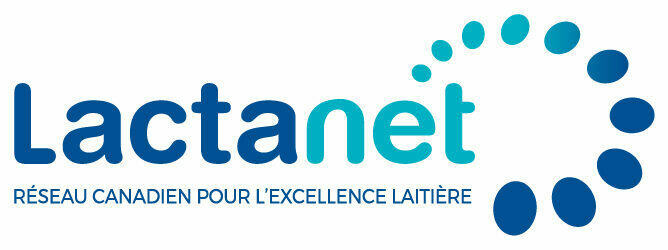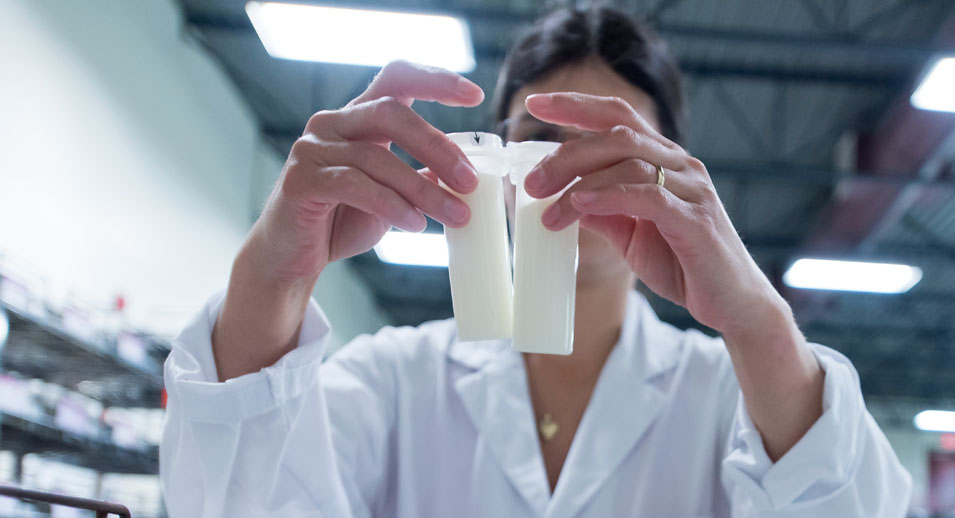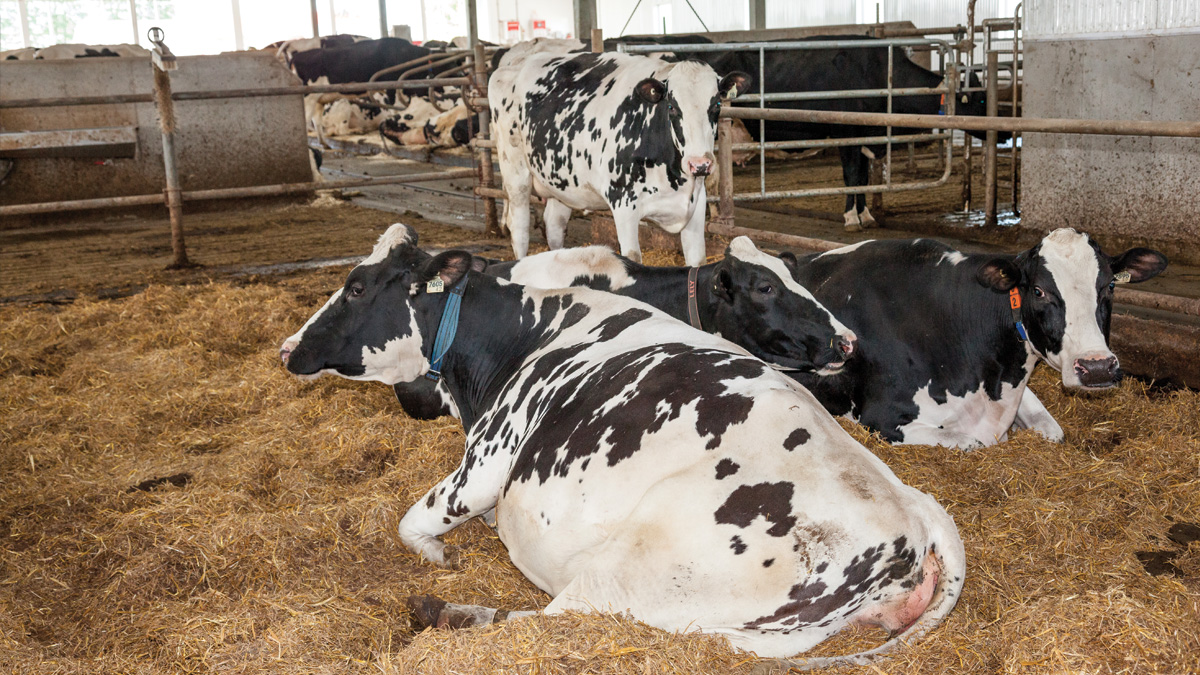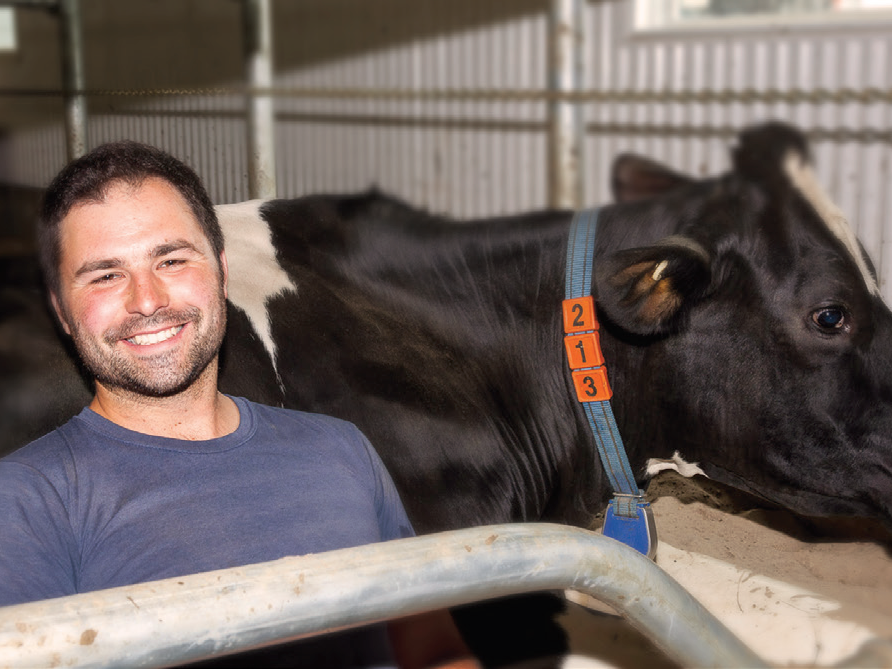Overview of the Using the Numbers – Dairy Benchmarking Project
- November 10, 2021
At Lactanet, one of the fundamental services offered is the collection of data. A comment we hear from farmers regularly is that there is so much information coming at them daily, it can be overwhelming. To get the true value from the data and the reports we provide back, proper interpretation of the information is critical.
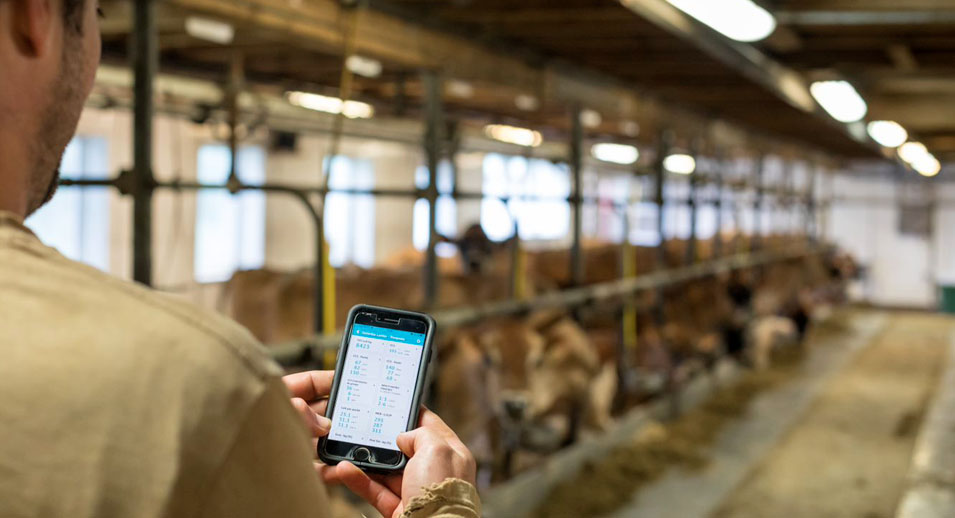
Overview of the Using the Numbers - Dairy Benchmarking Project
The importance and value of using on-farm data led to two projects recently completed by Lactanet in Prince Edward Island, with the support from the Canadian Agricultural Partnership, the Government of Prince Edward Island, and the Government of Canada. The first project, Using the Numbers Dairy Benchmarking, funded under the Business Development Program: Benchmarking and Risk Management will be the focus of this article. A follow-up article will discuss the second project, Using on-farm data and tools to identify and monitor profitability.
The main objective of this project was to demonstrate the potential impact of using the numbers in the Lactanet reports to identify potential opportunities, then finding solutions to maximize herd performance and profitability.
To do this, Lactanet Dairy Advisor, Dr. Stirling Dorrance, worked directly with six PEI herds, providing advisory services over a 12-month period. “One of the most significant issues on Atlantic dairy farms impacting an animal’s lactation performance is transition cow management”, says Dr. Dorrance. Therefore, the focus of the project was transition cow management and utilizing the five important principles of transition cow management.
Five key factors impacting transitions
- Adequate Bunk space
- Cow movement and social stress
- Stall size and pack size
- Comfort of the lying surface
- Dry cow diet
The Project – Process and Results
For this project, each of the six farms on the first visit, had their individual Lactanet Test Day Reports reviewed to identify where improvements could be made during the transition period. Some of the more common issues identified were 1) production increases below expectations between lactation groups; 2) high prevalence of ketosis; 3) low Transition Cow IndexesTM (TCI’s); and 4) poor milk peaks.
Following this initial visit, follow up visits were scheduled to evaluate how recommended changes in the dry cow/transition cow program, had affected the herd’s test day numbers.
Not all six farms were able to implement every recommendation based on the five key factors of transition. However, each herd implemented at least some of the recommendations. Table 1 shows the changes that were implemented on each farm.
Table 1. Changes implemented for each farm base on the five key transition factors for the Using the Numbers-Dairy Benchmarking project
| 5 Key Factors of Transition | Herd A | Herd B | Herd C | Herd D | Herd E | Herd F |
| Improved Bunk Space | yes | yes | yes | yes | ||
| Improved Cow Movement | yes | yes | yes | yes | yes | yes |
| Improving Stall and Pen Size | yes | yes | yes | yes | ||
| Improving Resting Surface | yes | yes | yes | yes | yes | yes |
| Improved Diet | yes | yes | yes | yes | yes | yes |
If we take a look at Herd F, where the most changes were implemented:
- Looking at the TCI for this herd over the 12-month period:

The TCI’s improved in this herd, from a 90-day rolling average of -740 in Dec 2018 to a 90-day rolling average of +521, by December 2019. This is an improvement of 1,261 TCI points, which means the cows that calved out around the December 2019 test date would have potentially 1,261 kgs more milk than expected/lactation as compared to the ones calving out 12 months earlier.
- From our Ketolab Report, over this same time period, the 90-day prevalence of ketosis in the fresh cows also was reduced, going from 14% in December 2018 down to 6% in December 2019.
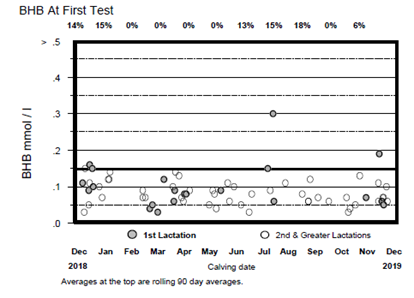
- SCC Report: We also saw a nice, gradual decrease in this herd’s SCC, corresponding to the improved transitions, which is what we often tend to see as transitions improve in a herd.
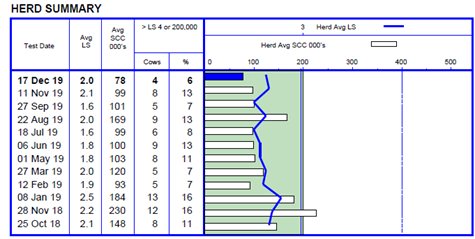
In conclusion…
The Using the Numbers-Dairy Benchmarking project demonstrated that by using test day data and reports like the Transition Cow IndexTM and Ketolab, allowed producers to identify bottle-necks in their transition program, make changes, and then monitor progress.
All six herds experienced varying levels of improved transitions after 12 months. In a short survey conducted after the completion of the project, the producers felt that the changes made to the dry cow program resulted in improved transitions. Overall TCI’s increased and prevalence of ketosis in the fresh cows was reduced. Herds reported having fewer health issues after calving, such as milk fevers, retained placentas, ketosis and displaced abomasums.
The results of this project help illustrate the value of using on-farm data to manage herd performance and profitability. Focusing on areas of management such as the dry cow/transition cow program and using the data to identify problems and ultimately solutions, is having a significant impact on many herds today.
The take-home message? It is easier to manage what you measure. Take notes any time you make changes; use your on-farm data (from Lactanet, on-farm software, or from your automated milking system); and reach out to your farm advisory team to help interpret this powerful information. Many are, and they are seeing the results.
